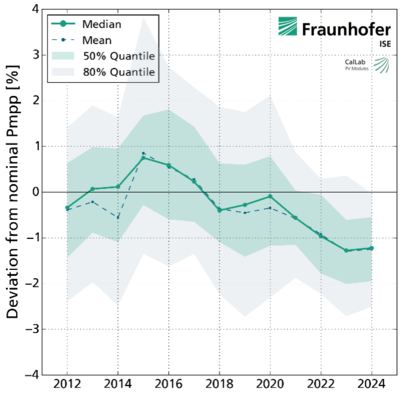Get to know the latest innovations about solar modules at Intersolar Europe in Munich, join our pv Guided tours, register here
The problem has been underestimated for years, but the sector has at last understood: Depending on the region and the surroundings, solar generators need to be cleaned on a regular basis. This is true for roof-top installations and solar parks alike.
The growing number of installations creates a new business segment: Specialised cleaning companies take over this task from the operator or their installing company. Or: Technicians specialised in photovoltaics offer the professional cleaning of the installations as part of their maintenance service. And it is exactly these kind of service providers that Gronau-Epe-based TG Hylift had in mind when they developed a self-propelled robot which can even clean elevated and roof-mounted solar panels.
35 degrees of maximum inclination
The hyCLEANER black solar is the newest addition to the product range that includes various cleaning systems. The hyCLEANER red is a piece of equipment for cleaning glass facades. The blue version is specially adapted to glass aluminium roofs up to an inclination of 55 degrees, while the version black solar applies the experience gathered to solar installations. Panels can be mounted at no more than 35 degrees.
TG Hylift is an engineering company focused on equipment engineering. “We develop the systems and are involved in the engineering side,” Andreas Grochoviak, one of the two CEOs, explains. “We do not engage in manufacturing, but simply pass our specifications on to the producers of the components.”
Go with the flow of the market
All that happens at TG Hylift is final assembly of the equipment. With seven members of staff, the company is very streamlined and relies on extensive cooperation with the users. “This allows us to go with the flow of the market,” Grochowiak confides.
The cleaning robot hyCLEANER black solar was developed and tested together with Prime Solar in Osnabrück. This is also where the first of the robots are being used. In order to evaluate it, the TUV has also put it under close scrutiny. Prime Solar and their panel suppliers – primarily from Korea – have already given the cleaning robot the all-clear.
Panel manufacturers usually set very concrete rules on how to clean one of their panels. Inappropriate methods can scratch the covering glass od destroy the anti-reflective coating. If the wrong type of water is used, this can cause ugly lime spots. Under the influence of the summer heat, these can be etched into the glass, which can put a strain on the solar cells and even result in hotspots.
Test case at the Stade de Suisse
The hyCleaner can clean about 400 square metres in an hour – even with high inclinations (up to 35 degrees) and significant amounts of dirt. As a test case, one was used to clean the solar panels on top of the Stade de Suisse in Bern. Here it even managed 800 square metres per hour. “Overall it took us two weeks to clean the complete installation,” Alfons Thihatmer, the other CEO, recalls. “And while we were at it, we also took care of maintenance.
The robot weighs 78 kilograms. The brushes are self-supporting to allow better cleaning of the panel edges. They have a width of 90 centimetres, the electric motor comes from an e-bike. “An overweight pigeon has a greater point load than this machine,” Thihatmer states.
Up to the roof by crane
Bern had shown that it can sometimes not be so easy to get such a robot up to the roof. It was a crane that lifted the unit up to the roof of the stadium. Fully demineralised water was used for cleaning. Because the water-bearing hydraulics are made of stainless steel, it can also be used with distilled or ionised water as well as brine.
The battery on board of the hyCLEANER lasts for up to five hours. This is time enough to cover larger installations, for instance on the roofs of cow sheds. The robot can traverse any gap between the panels up to 30 centimetres. For any gaps larger than that, special blocks are available to bridge them.
For sale, rent or leasing
One hyCLEANER black solar costs 28,000 euros. It is also possible to rent or lease it. Alfons Thihatmer is sure: “An independent market for companies that offer solar cleaning services is emerging.” Especially the operators of installations will welcome such service providers to keep costs and effort in check. “Any decent installing company can do this,” he remarks. “The technician is already up on the roof, dealing with the installation. This machine can be operated by one person. This can be taken care of as a part of maintenance.”
Smaller solar installations for private use do not require such robots. There, cleaning by hand using a telescopic rod is usually enough. This does not work for larger installations, because the effort can quickly get out of hand. (Heiko Schwarzburger)
Stay informed, get our weekly newsletter. Register here: http://www.pveurope.eu/Newsletter
Related news:
http://www.pveurope.eu/Products/Solar-Generator/Solar-modules







